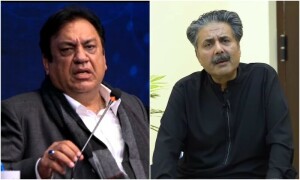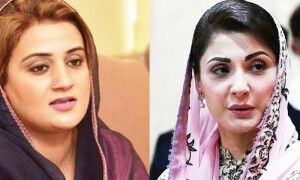ISLAMABAD: Embedded in the Weave – an exhibition of embroidered tapestries by Iram Zia Raja – opened at Serena’s Satrang Gallery on Thursday.
Ms Raja, who heads the textile design department at the National College of Arts in Lahore, said the work incorporates “the cultural roots of our region and pictorial sensibilities of our age”.
“So many inspirations and influences have gone into this show that it is difficult for me to say which piece is most significant,” she said, adding that one of the major influences in her work was illuminated manuscripts of the Holy Quran.
“When I look at the way our holy book is now presented, it is simply in text format. But when we go back to the history of illuminated manuscripts of the Holy Quran, you can see that the calligraphists were creating marvels. I’m trying to bring that sense of the marvellous to people today. I am trying to bring that beauty back to the sacred,” she said.
There are other inspirations too. “Artists, in fact all human beings, exist at so many different levels simultaneously; our personalities have many co-existing layers. I think whatever I have gathered, whatever I have experienced, has come together here.”
Satrang Director Asma Rashid Khan explained that Ms Raja employed traditional techniques of embroidering textiles to create new and contemporary pieces of art. “The choice of coloured fabric and threads is practically a substitute for paint as she uses strong and complementary hues in her compositions.”
“Each work is also a synthesis of past and present, art and craft, preserving an essential part of the Pakistani heritage.”
Unesco Director Vibeke Jensen inaugurated the exhibition and spoke of her keen interest in Pakistani art, craft and culture. “When I opened the invitation to this exhibition, the art works lit up not just my computer screen but my whole day. The traditional embroidery and the use of metallic thread adds something very special.”
Art critic Aasim Akhtar said, “I saw some of Iram’s pieces at an earlier exhibition in Lahore but the impact of the work is far better in this space, probably because of the space and lighting. By and large, the Arabic calligraphy is very prominent in this collection, as are elements of Islamic architecture, Quranic manuscripts and Islamic cosmic motifs and devices. There are also allusions to Islamic history.”
Published in Dawn, February 12th, 2016















































Dear visitor, the comments section is undergoing an overhaul and will return soon.